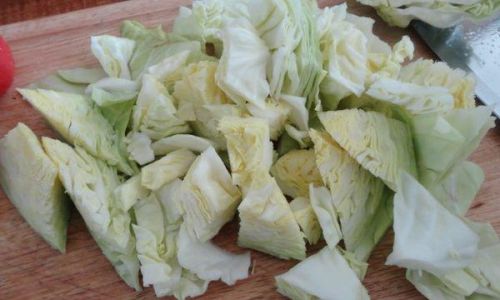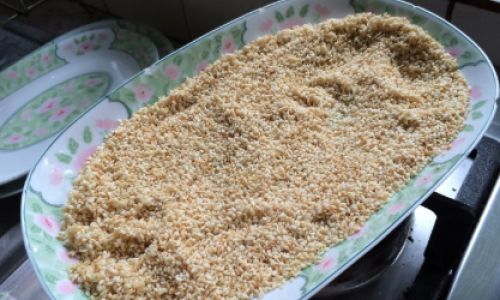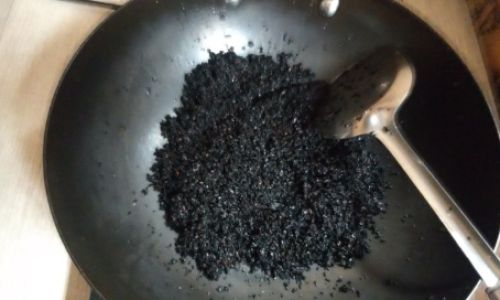Stir-fried cabbage, a humble yet versatile dish, has graced tables across the globe for centuries. Often overlooked in favor of more elaborate meals, this vegetable-based recipe holds immense potential when prepared with care and creativity. Whether you’re a seasoned home cook or a novice in the kitchen, mastering the technique of stir-frying cabbage can lead to a dish that is both comforting and gourmet. This article will explore the nuances of selecting the right ingredients, perfecting cooking methods, and elevating flavors to transform a simple cabbage into a culinary masterpiece.

Understanding the Humble Cabbage
Cabbage, a member of the Brassica oleracea family, comes in various forms—green, red, Napa, and Savoy being the most common. Each variety offers a slightly different texture and flavor profile. Green cabbage, with its crisp leaves and mild taste, is ideal for stir-fries due to its ability to absorb seasonings without becoming soggy. Napa cabbage, with its tender, frilly leaves, cooks faster and adds a delicate sweetness, while red cabbage introduces a vibrant hue and earthy undertones. Choosing the right type depends on personal preference and the desired outcome of your dish.
When selecting cabbage, look for heads that feel heavy for their size, with crisp, unblemished leaves. Avoid specimens with wilted outer layers or a pungent odor, as these indicate age or improper storage. Properly stored cabbage can last up to two weeks in the refrigerator, making it a pantry staple for quick meals.
Preparation: The Foundation of Flavor
The key to exceptional stir-fried cabbage lies in meticulous preparation. Begin by removing any damaged outer leaves and rinsing the cabbage under cold water. Pat it dry thoroughly to prevent excess moisture from steaming the vegetable during cooking. For green or red cabbage, quarter the head and slice it into thin, uniform strips—about ¼ inch thick. Thinner slices cook faster and ensure even texture. Napa cabbage, being more delicate, should be cut into 1-inch segments, separating the leaves from the crunchy stem for staggered cooking times.
Aromatics play a pivotal role in building depth. Minced garlic, ginger, and sliced shallots or onions form the flavor base. For a hint of heat, consider adding dried red chili flakes or fresh bird’s-eye chilies. Optional additions like grated carrot, julienned bell peppers, or sliced mushrooms can introduce complexity, but the beauty of stir-fried cabbage lies in its simplicity.

The Stir-Frying Technique: Precision and Speed
Stir-frying is a high-heat, quick-cooking method that requires attention to detail. Use a wok or a large skillet with sloping sides to facilitate even heat distribution and easy tossing. Preheat the pan over medium-high heat until a drop of water sizzles and evaporates instantly. Add a neutral oil with a high smoke point, such as peanut, vegetable, or avocado oil. Swirl the oil to coat the pan’s surface.
Begin by sautéing aromatics until fragrant—about 30 seconds. Avoid burning the garlic or ginger, as this imparts bitterness. Immediately add the cabbage, tossing it gently with tongs or a spatula to coat it in oil. The high heat will sear the edges, locking in moisture and creating a slight char that enhances flavor.
Mastering Texture and Doneness
The ideal stir-fried cabbage retains a slight crunch while being tender enough to chew comfortably. Overcooking results in mushiness, while undercooking leaves it raw and fibrous. For green cabbage, stir-fry for 3–4 minutes; Napa cabbage requires only 2–3 minutes. Red cabbage benefits from a brief cooking time to preserve its vivid color.
To achieve even cooking, add the cabbage in batches if your pan is overcrowded. Overcrowding lowers the pan’s temperature, leading to steaming rather than stir-frying. Toss the cabbage frequently to ensure all sides are exposed to heat.

Seasoning: Balancing Act of Flavors
Seasoning is where creativity shines. A classic Chinese-inspired stir-fry might use soy sauce, rice vinegar, and a pinch of sugar to balance saltiness and acidity. For a Korean twist, incorporate gochujang (fermented chili paste) and sesame oil. In Eastern Europe, caraway seeds and apple cider vinegar elevate the dish.
Start with a base of salt and pepper, then experiment with umami-rich ingredients like oyster sauce, fish sauce, or nutritional yeast for a vegan alternative. A splash of citrus juice (lemon or lime) or a drizzle of toasted sesame oil just before serving adds brightness. Fresh herbs such as cilantro, basil, or mint can be tossed in at the end for a fragrant finish.
Enhancements and Variations
Stir-fried cabbage is a blank canvas for customization. Here are some ideas to elevate the dish:
- Protein Boost: Add diced tofu, tempeh, or scrambled eggs for a heartier meal.
- Nutty Crunch: Sprinkle toasted sesame seeds, crushed peanuts, or cashews before serving.
- Fermented Notes: Mix in kimchi, sauerkraut, or pickled vegetables for tanginess.
- Cheese Finish: A sprinkle of Parmesan or crumbled feta adds richness (though this deviates from traditional preparations).
- Spice Levels: Adjust heat with Sichuan peppercorns, black bean sauce, or fresh jalapeños.
Troubleshooting Common Pitfalls
- Soggy Cabbage: Ensure the pan is hot enough before adding the cabbage. Avoid covering the pan during cooking, as this traps steam.
- Uneven Cooking: Cut the cabbage into uniform strips and cook in batches if necessary.
- Bland Flavor: Amplify seasonings gradually, tasting as you go. Remember that cabbage absorbs flavors best when cooked over high heat.
- Burnt Aromatics: Add garlic and ginger after the oil is hot but before the cabbage to prevent scorching.
Nutritional Benefits: More Than Just a Side Dish
Cabbage is a nutritional powerhouse, rich in fiber, vitamin C, vitamin K, and antioxidants. Its low-calorie content makes it ideal for weight management, while its anti-inflammatory properties support digestive health. Stir-frying preserves most nutrients, unlike boiling, which leaches vitamins into water.

Pairing Suggestions
Stir-fried cabbage complements a wide range of dishes. Serve it alongside grilled meats, fried rice, or noodles. In colder months, pair it with a warm bowl of congee or porridge. For a light meal, toss it with quinoa or couscous and top with a fried egg.
The Final Touch: Presentation and Mindfulness
Presentation matters, even in home cooking. Garnish your stir-fry with a sprinkle of chopped scallions, a drizzle of chili oil, or a wedge of lime. Encourage diners to savor the dish mindfully, appreciating the interplay of textures and flavors.
Conclusion
Stir-fried cabbage is a testament to the idea that simplicity, when executed with intention, can yield extraordinary results. By focusing on quality ingredients, precise cooking techniques, and thoughtful seasoning, even the most unassuming vegetable can become the star of a meal. Whether you adhere to tradition or experiment with global flavors, this dish invites creativity and rewards curiosity. So, the next time you find a cabbage in your kitchen, remember: with a hot pan, a dash of oil, and a sprinkle of imagination, you’re just minutes away from a plate of pure deliciousness.
Word Count: 1,050






0 comments